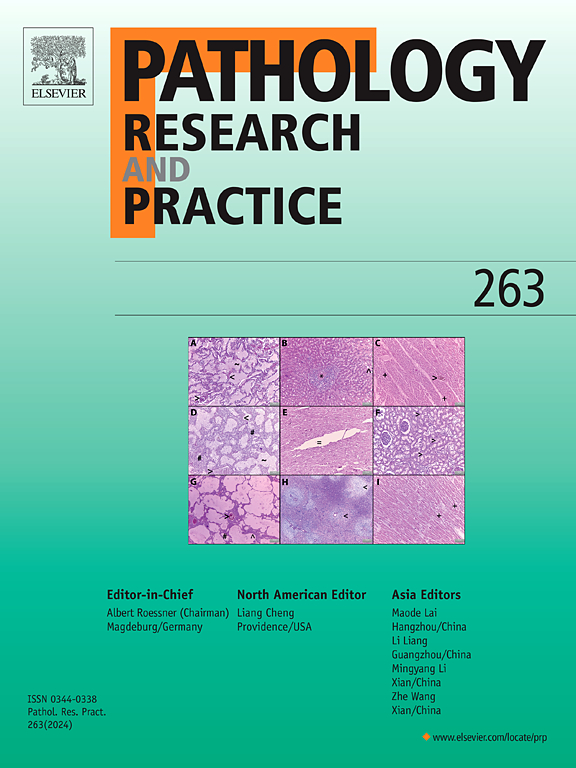The heart of the matter: How gut microbiota-targeted interventions influence cardiovascular diseases
IF 2.9
4区 医学
Q2 PATHOLOGY
引用次数: 0
Abstract
The human body is habitat to a wide spectrum of microbial populations known as microbiota, which play an important role in overall health. The considerable research has mostly focused on the gut microbiota due to its potential to impact numerous physiological functions and its correlation with a variety of disorders, such as cardiovascular diseases (CVDs). Imbalances in the gut microbiota, known as dysbiosis, have been linked to the development and progression of CVDs through various processes, including the generation of metabolites like trimethylamine-N-oxide and short-chain fatty acids. Studies have also looked at the idea of using therapeutic interventions, like changing your diet, taking probiotics or prebiotics, or even fecal microbiota transplantation (FMT), to change the gut microbiota's make-up and how it works in order to prevent or treat CVDs. Exploring the cause-and-effect connection between the gut microbiota and CVDs offers a hopeful path for creating innovative microbiome-centered strategies to prevent and cure CVDs. This review presents an in-depth review of the correlation between the gut microbiota and CVDs, as well as potential therapeutic approaches for manipulating the gut microbiota to enhance cardiovascular health.
求助全文
约1分钟内获得全文
求助全文
来源期刊
CiteScore
5.00
自引率
3.60%
发文量
405
审稿时长
24 days
期刊介绍:
Pathology, Research and Practice provides accessible coverage of the most recent developments across the entire field of pathology: Reviews focus on recent progress in pathology, while Comments look at interesting current problems and at hypotheses for future developments in pathology. Original Papers present novel findings on all aspects of general, anatomic and molecular pathology. Rapid Communications inform readers on preliminary findings that may be relevant for further studies and need to be communicated quickly. Teaching Cases look at new aspects or special diagnostic problems of diseases and at case reports relevant for the pathologist''s practice.

 求助内容:
求助内容: 应助结果提醒方式:
应助结果提醒方式:


